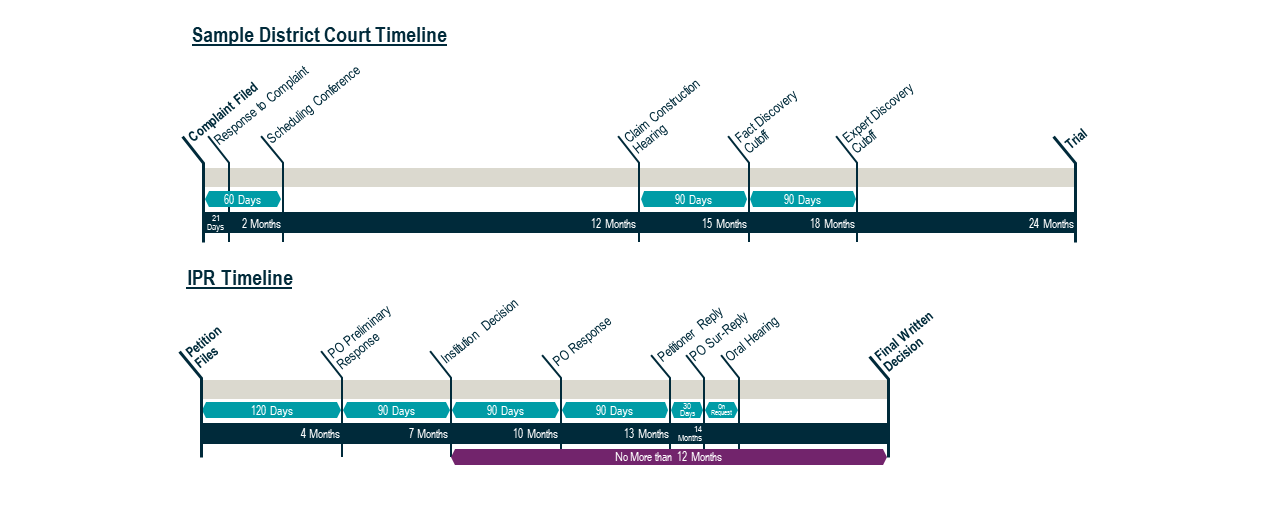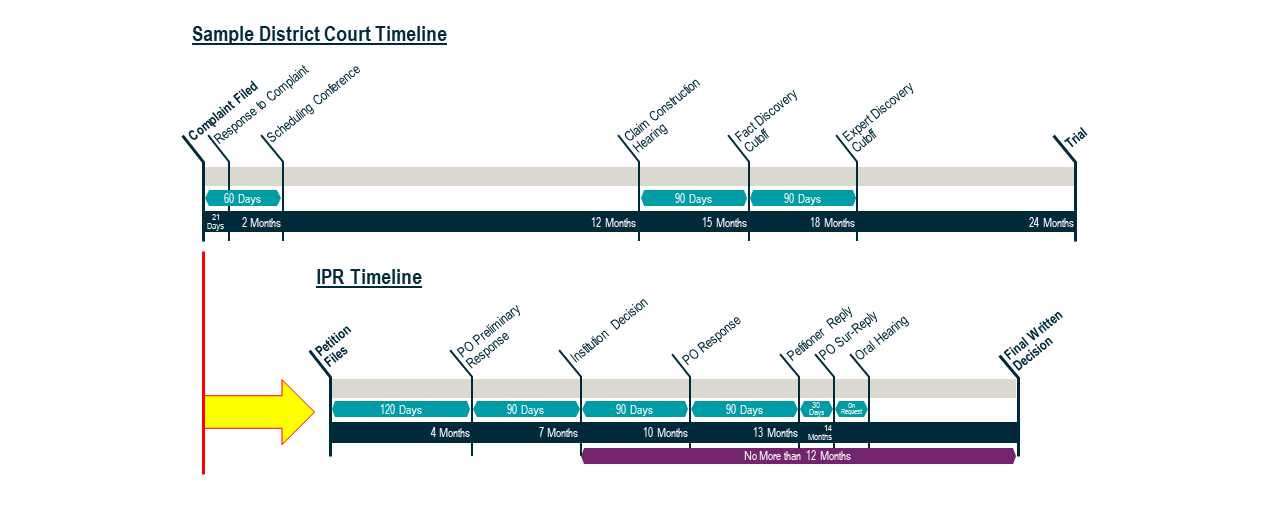Being sued for patent infringement in the U.S. can be confusing, especially for foreign companies with limited litigation experience. Even more confusing are the multiple options and venues available for responding to patent infringement suits by challenging the validity of the asserted patent. One such option is post-grant proceedings at the Patent Trial and Appeal Board (PTAB), with inter partes review (IPR) being a common choice for defendants sued for patent infringement. But foreign companies or others new to patent litigation in the U.S often assume too much when considering petitioning for IPR.
Below are the three things that foreign companies should keep in mind when considering IPR, especially to avoid mistaken assumptions that can prove costly in the long run.
1. Understand the necessity and benefits of IPR proceedings
Foreign companies may hesitate to add a new litigation venue outside the District Court, usually under the mistaken assumption that the added cost is duplicative or can be deferred until later. Although patent invalidation efforts at the PTAB may seem to overlap with District Court litigation, IPR is often a more cost-effective avenue for challenging patents and is more likely to result in a finding of unpatentability.
Filing an IPR petition against a patent asserted in litigation can lead to a quicker path toward settlement early in the parallel litigation. In the same vein, an IPR proceeding can be the impetus for a stay of litigation or possibly even end the entire dispute long before a costly jury trial—especially where the timeline for an IPR proceeding is roughly 19 months while the time to trial in District Court could be at least two years (but likely far more).

Unlike juries and most District Court judges, the administrative patent judges (APJs) at the PTAB have both technical and legal training along with many years of patent litigation and/or prosecution experience. As such, the APJs can more readily understand the technology at issue and reach decisions related to prior art faster. The parties to IPR proceedings can also make more advanced technical arguments at the PTAB than would be practical in a jury trial.
The burden of proof on patent challengers in PTAB proceedings is more favorable than that of District Court. In District Court, there is a statutory presumption of validity, and each patent claim must be shown to be invalid by “clear and convincing” evidence. At the PTAB, there is no presumption of validity, and the petitioner need only establish that a claim is unpatentable by a “preponderance of the evidence” -- a much lower standard than “clear and convincing” evidence.
For a foreign company thrust into patent litigation in the U.S., the parallel paths of District Court and PTAB proceedings are often necessary to achieve a company’s goals toward settlement leverage, early termination or stay of the litigation, and heightened technical fluency in assessing the prior art.
2. Initiate the IPR process early
Even if a foreign company recognizes the necessity of an IPR proceeding, it is a mistake to assume that starting work on an IPR petition can be delayed. Such assumptions can increase costs and, worse yet, possibly weaken the chances of success in IPR.
While it is true that, under 35 U.S.C. § 315(b), a defendant has one year to file its IPR petition after being served a complaint in District Court, other considerations significantly shorten that timeframe:

Delaying an IPR petition for many months after a complaint is served can increase the likelihood that the PTAB will discretionarily deny the petition under the Fintiv precedent. Moreover, filing an IPR petition early (e.g., within three to four months after the complaint is served) can reduce the need to use a meaningful amount of the word count (limited to 14,000 words in an IPR petition) on issues related to the Fintiv factors. Filing an IPR petition early can increase the amount of space available to present the prior art grounds, thereby adding more detail and depth to the invalidity arguments.
In some District Courts, filing an IPR petition early in the litigation proceedings can increase the likelihood of successfully obtaining a stay of the proceedings. A successful institution decision in an IPR can take about seven months, but if IPR is instituted before the parties have engaged in costly discovery and claim construction, some District Courts are more likely to stay the litigation as a whole, thereby saving resources and avoiding duplication of efforts across venues.
Assuming that the IPR petition drafting process can be delayed or deferred until many months after the litigation complaint is served is an unforced error that can cost foreign companies dearly in the long run.
3. Consider the IPR specialist approach
The PTAB is a complex and nuanced forum that requires a different set of skills for success than those required for District Court litigation and patent prosecution. Not all patent litigators or prosecutors are IPR specialists, and not all patent law firms have significant experience practicing before the PTAB. Unfortunately, many foreign companies and those new to patent litigation in the U.S are unaware of this nuance, which can lead to the selection of inexperienced counsel.
It is very important for parties to PTAB proceedings to engage counsel who specialize in such proceedings (often referred to as “IPR specialists”). IPR specialists have a depth of experience in navigating the highly technical procedures and rapidly changing rules of practice at the PTAB, and they can usually do so in an efficient manner that does not compromise the parallel work ongoing in the District Court proceedings. Furthermore, IPR specialists often have experience working with a variety of patent litigators (including those from other firms) and know the importance of drafting the IPR petition with invalidity, noninfringement, and claim construction issues in mind.
Another common mistake for those new to PTAB practice is assuming that all prior art searching for an IPR petition can be completed before engaging IPR counsel. The types of prior art identified in the invalidity contentions early in District Court litigation are not necessarily the same types of prior art that should be used in IPR petitions, as they are not necessarily focused on all nuances of the dependent claims or prior art motivations to combine. Although it can be tempting to use internal resources to search for prior art for use in an IPR petition, it is often more economical to engage your IPR counsel early so that they can review and oversee the assessment of prior art publications. Such IPR specialists are experienced in determining exactly which particular combinations of publications can achieve the most persuasive IPR grounds for both independent and dependent claims.
Litigation prowess does not necessarily translate to the PTAB, so consider pairing your litigation team with IPR specialists when parallel proceedings are in play.
[View source.]